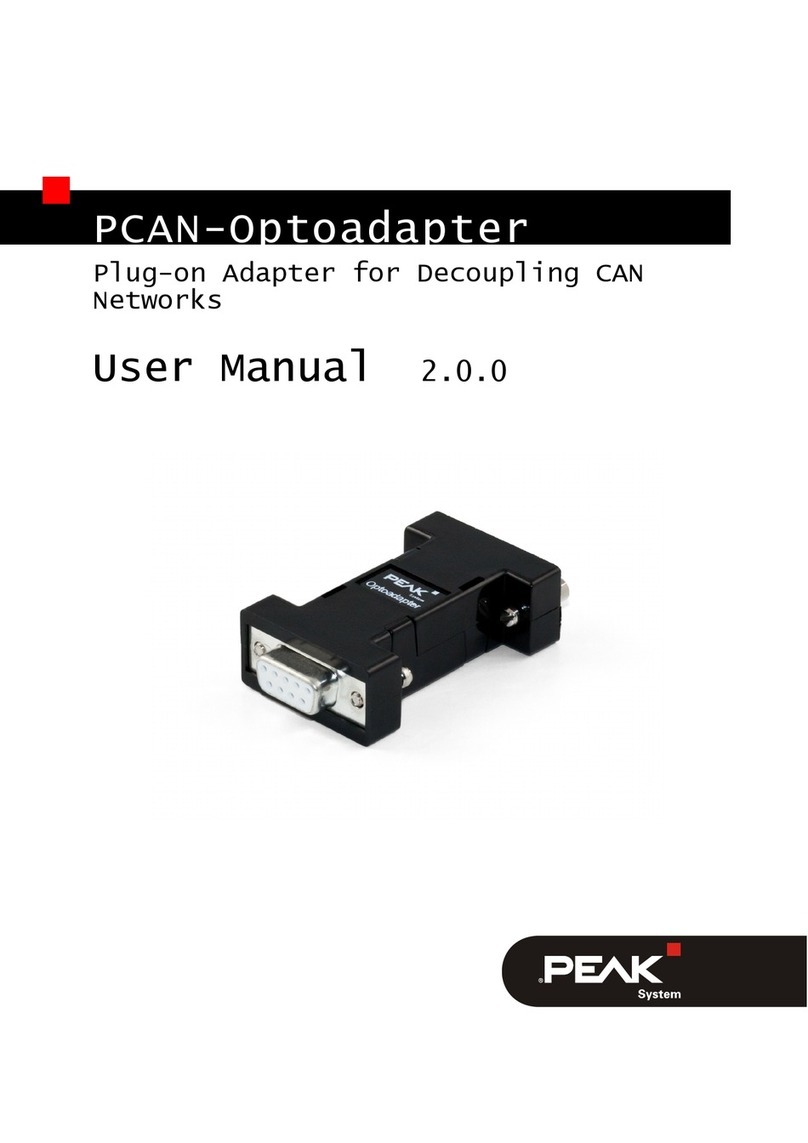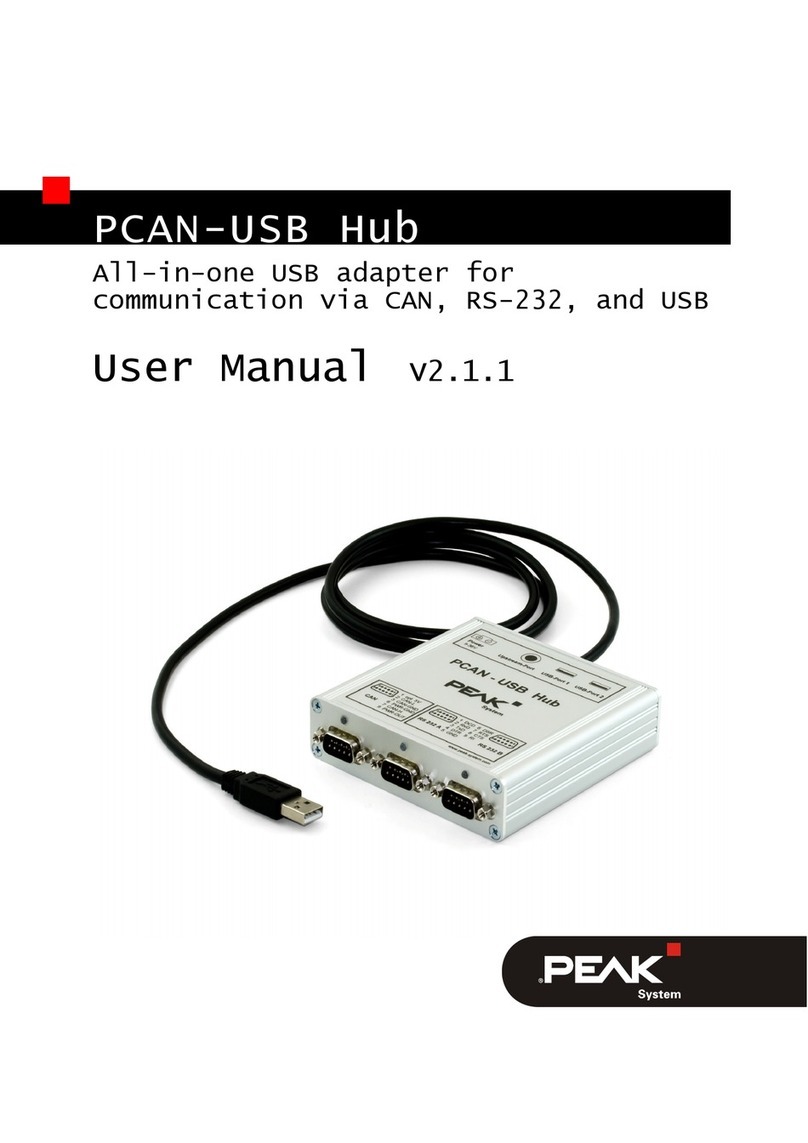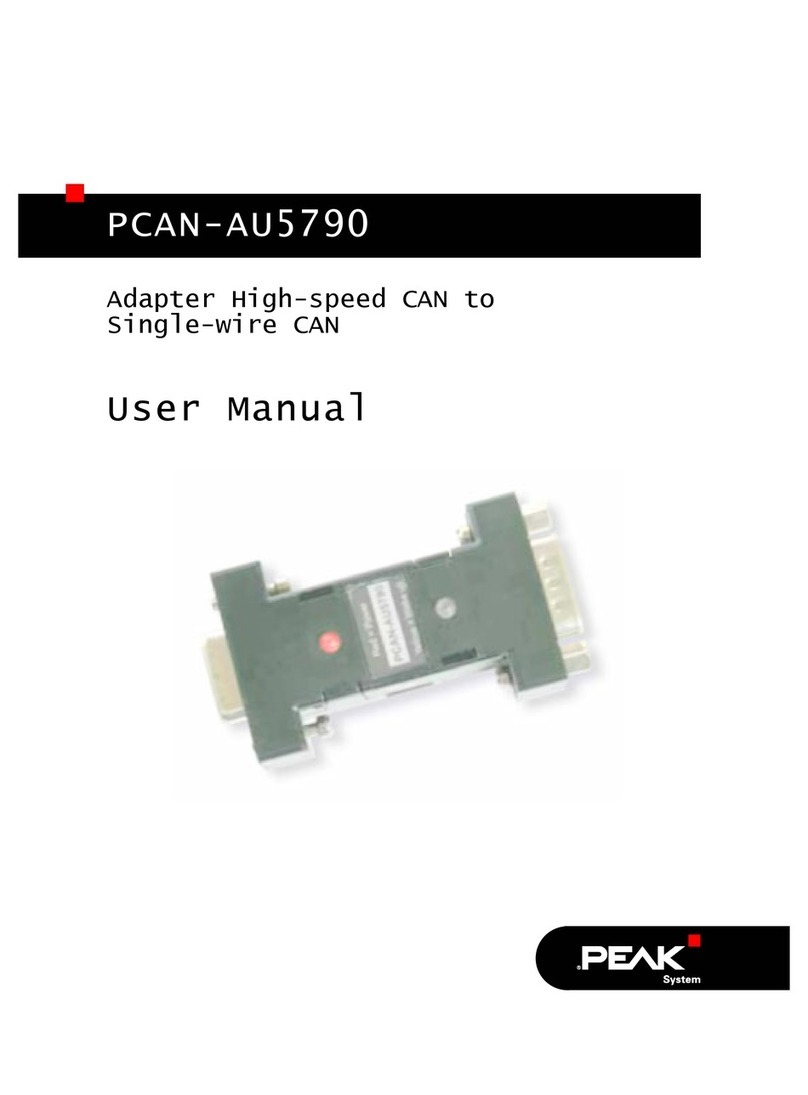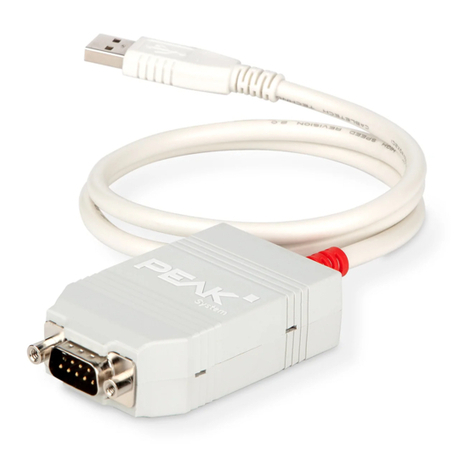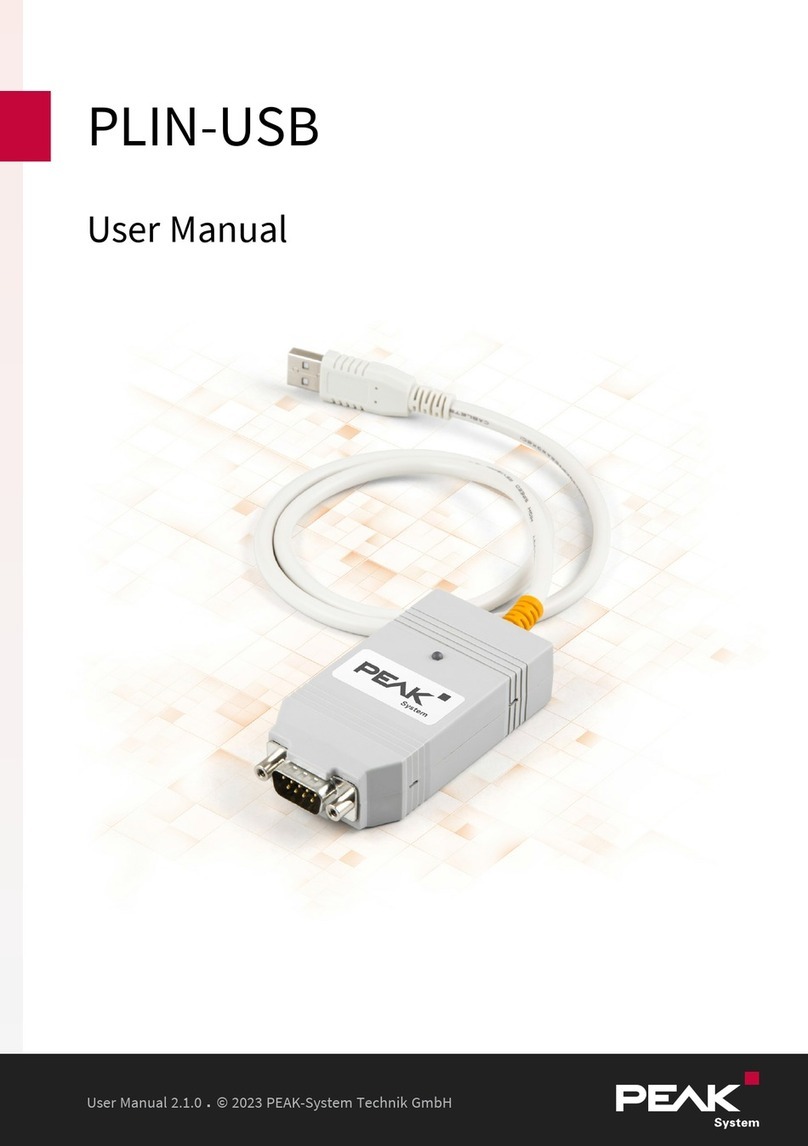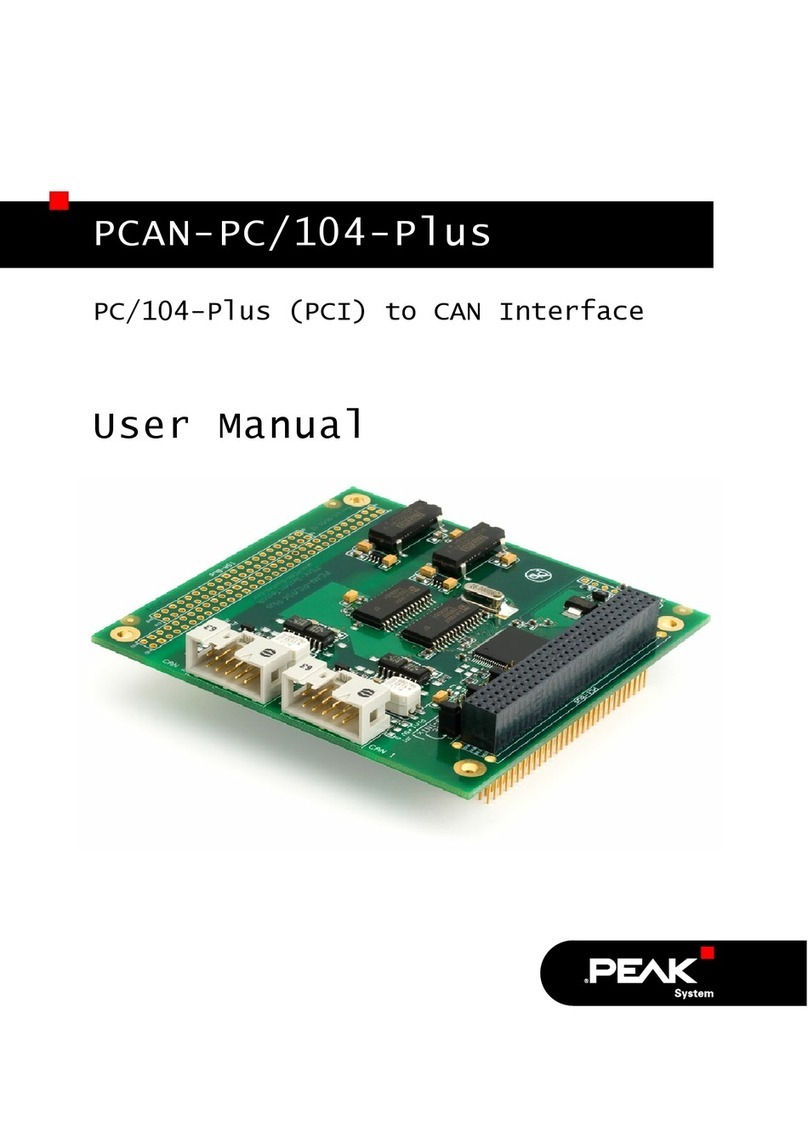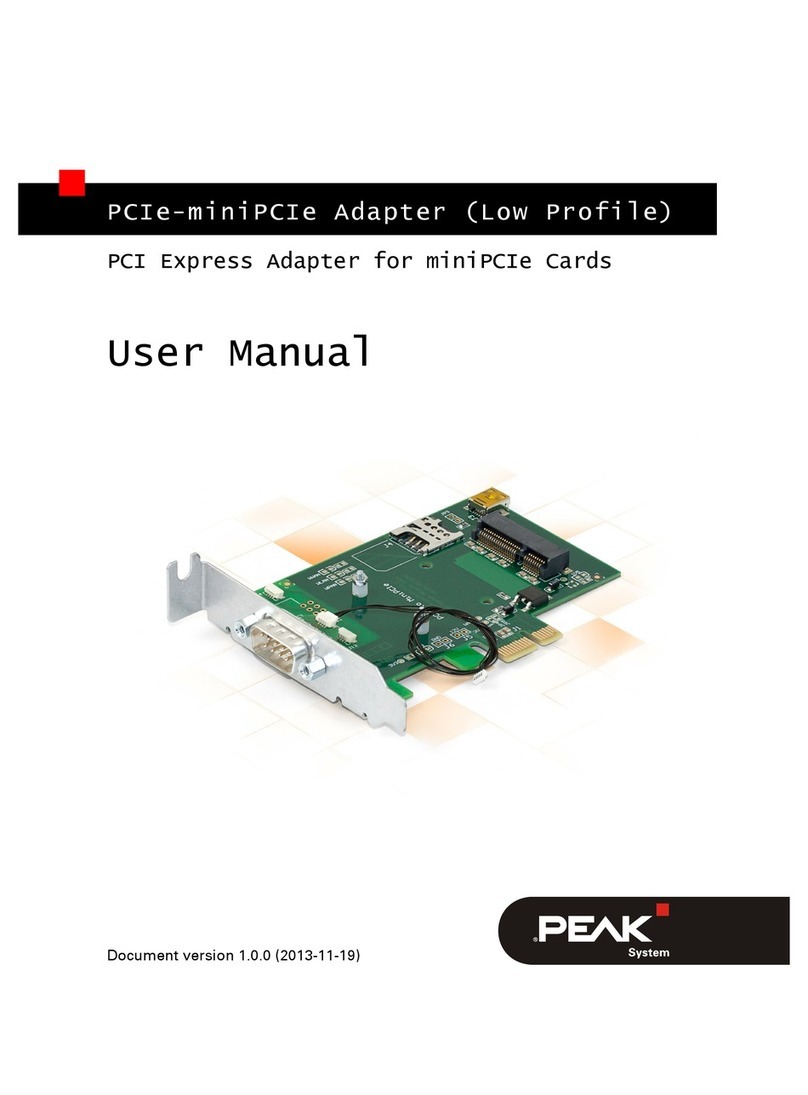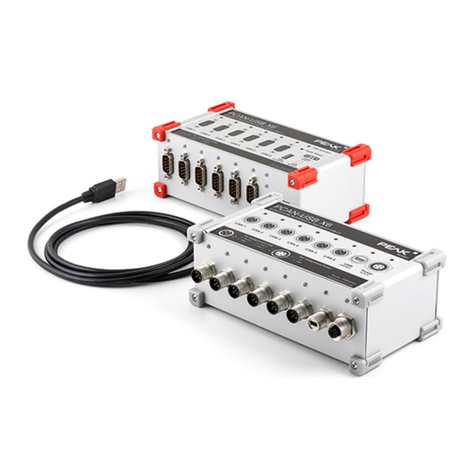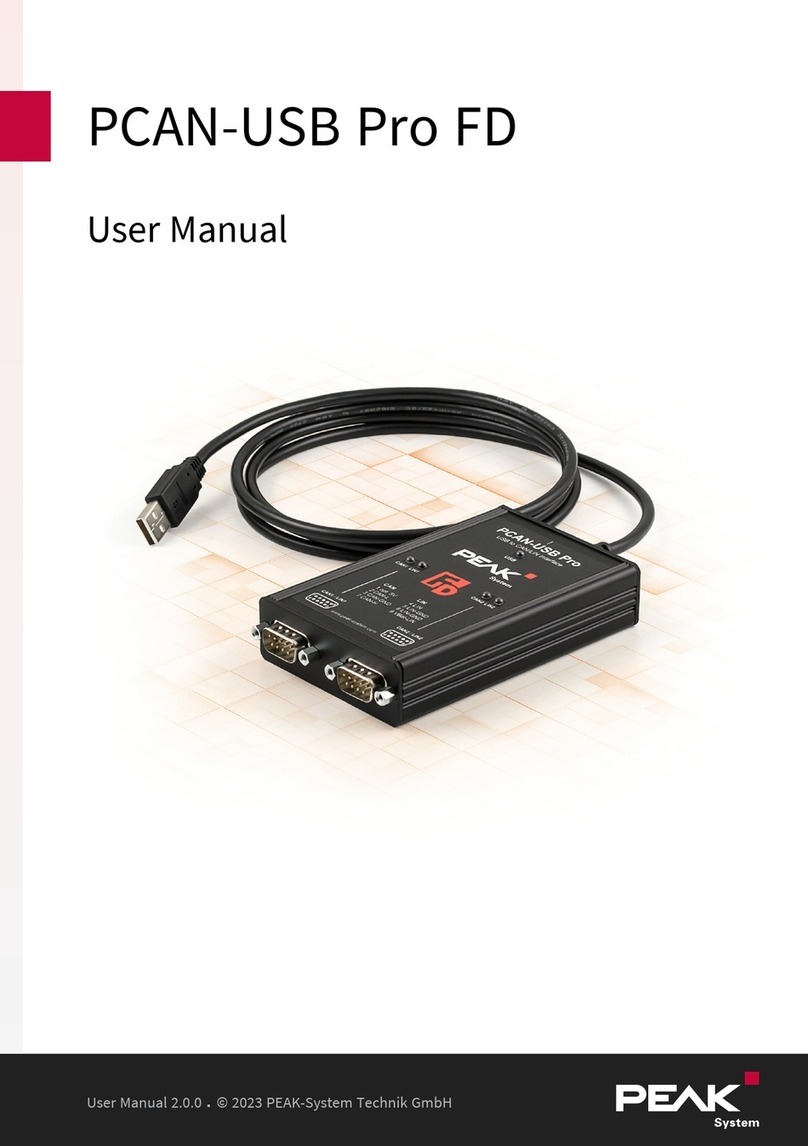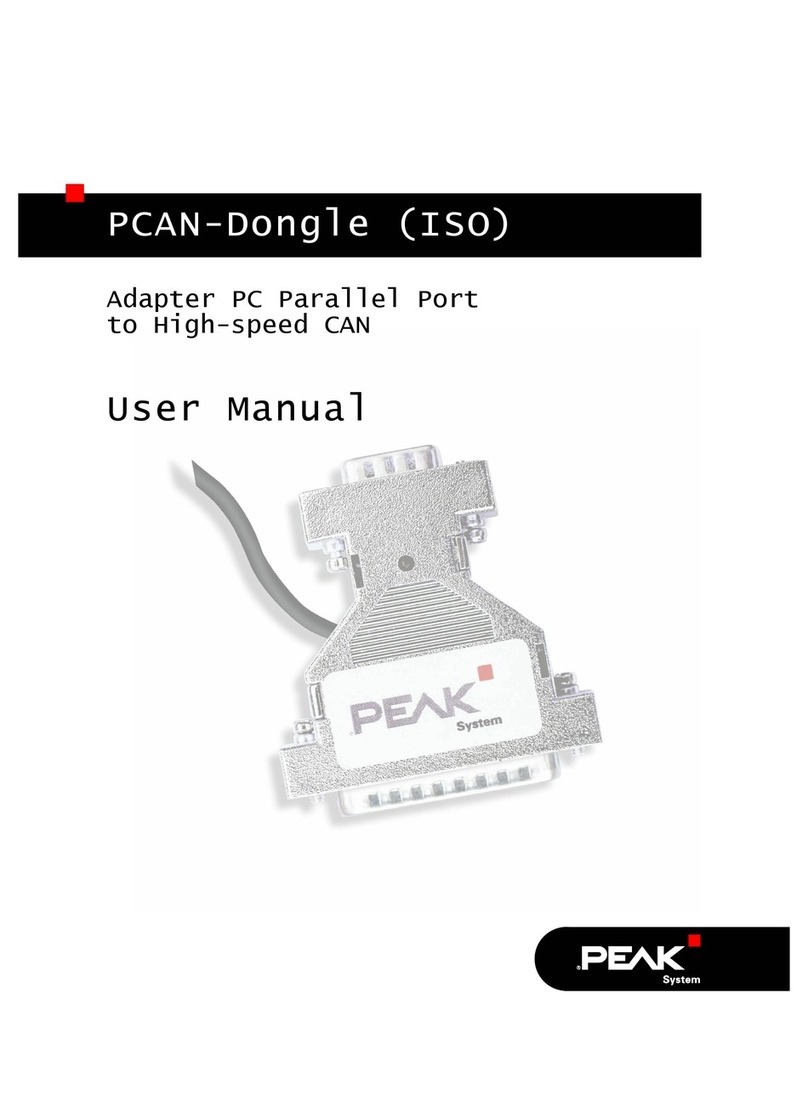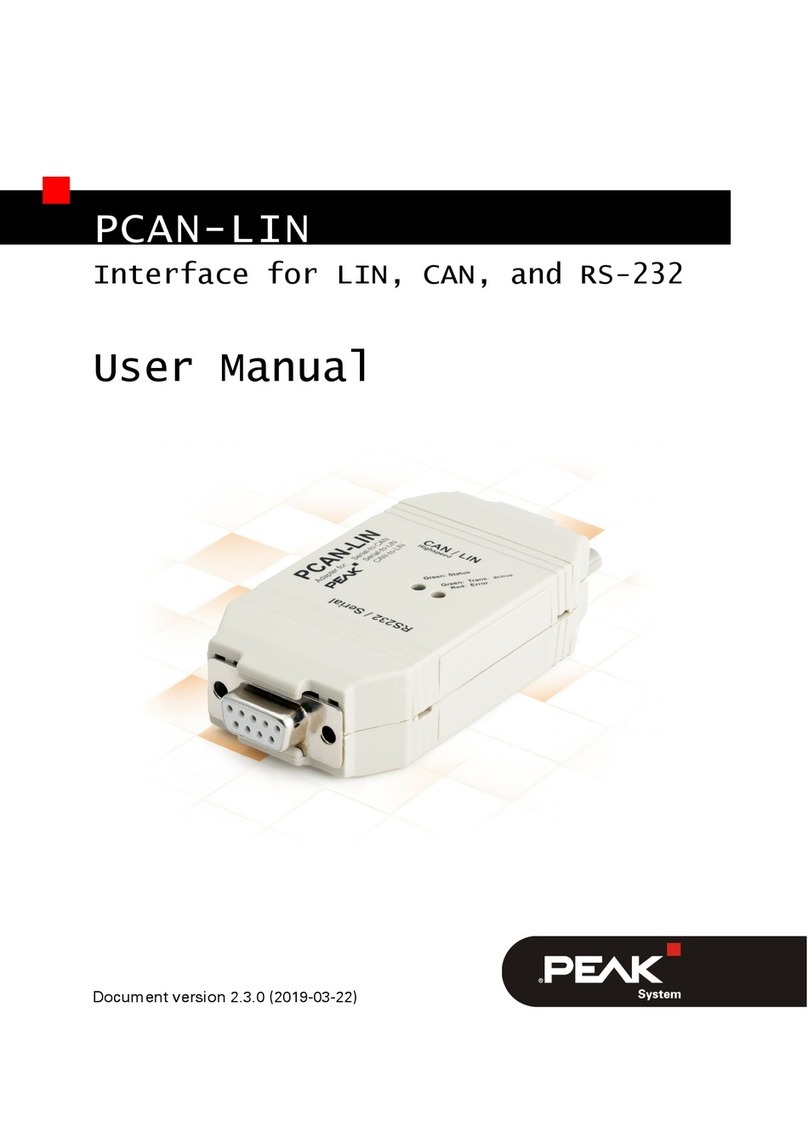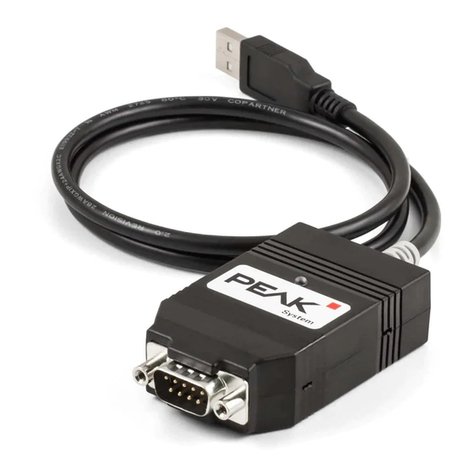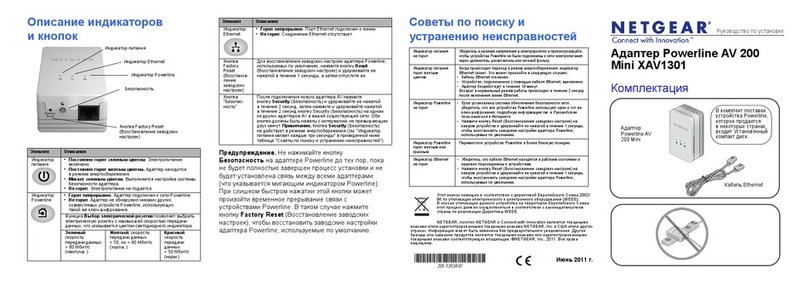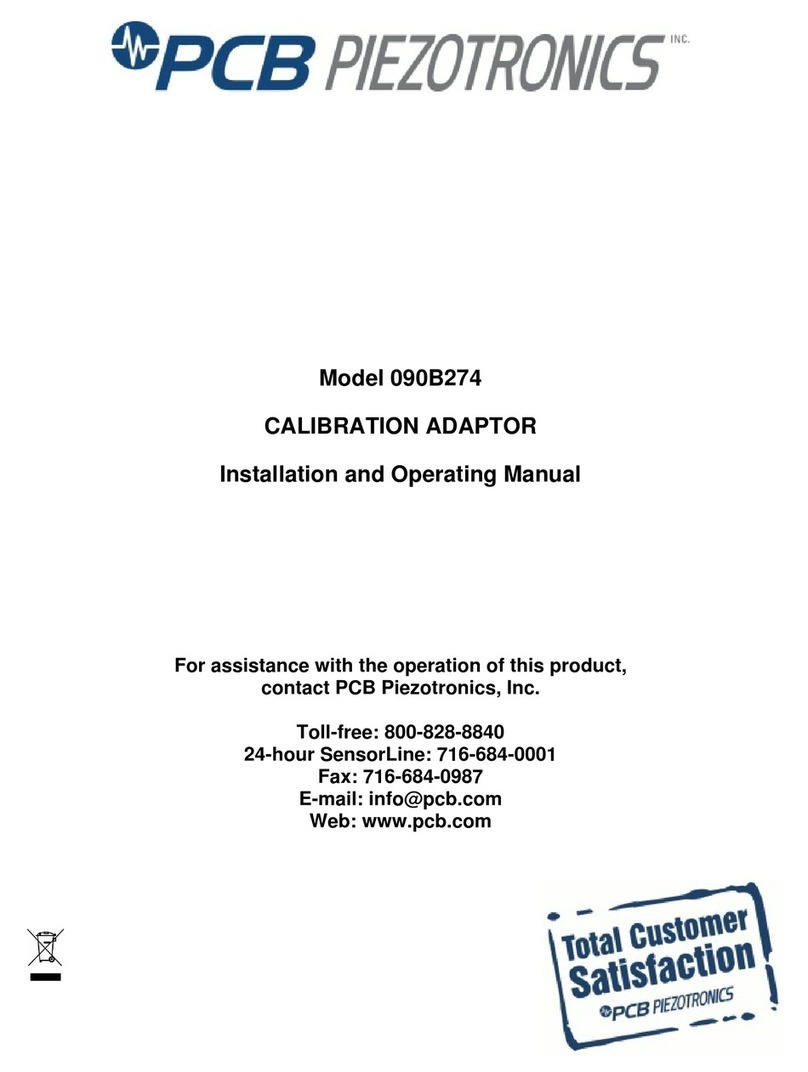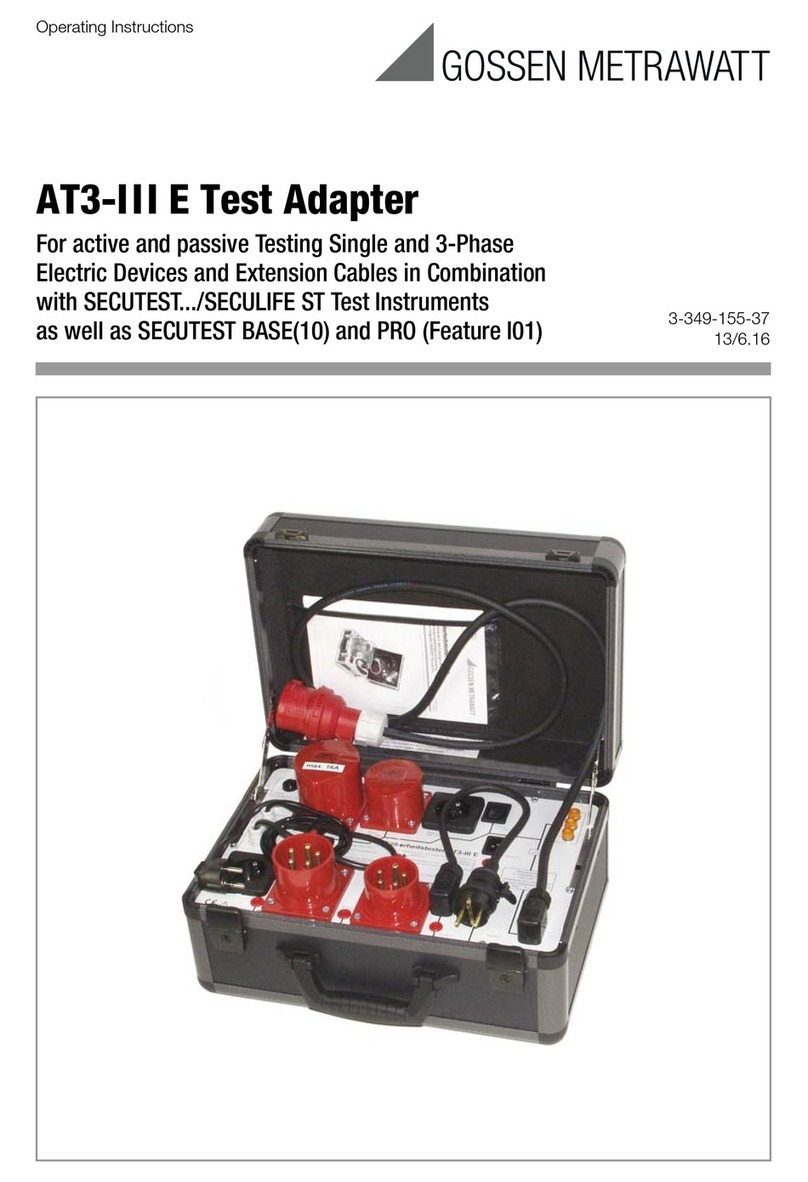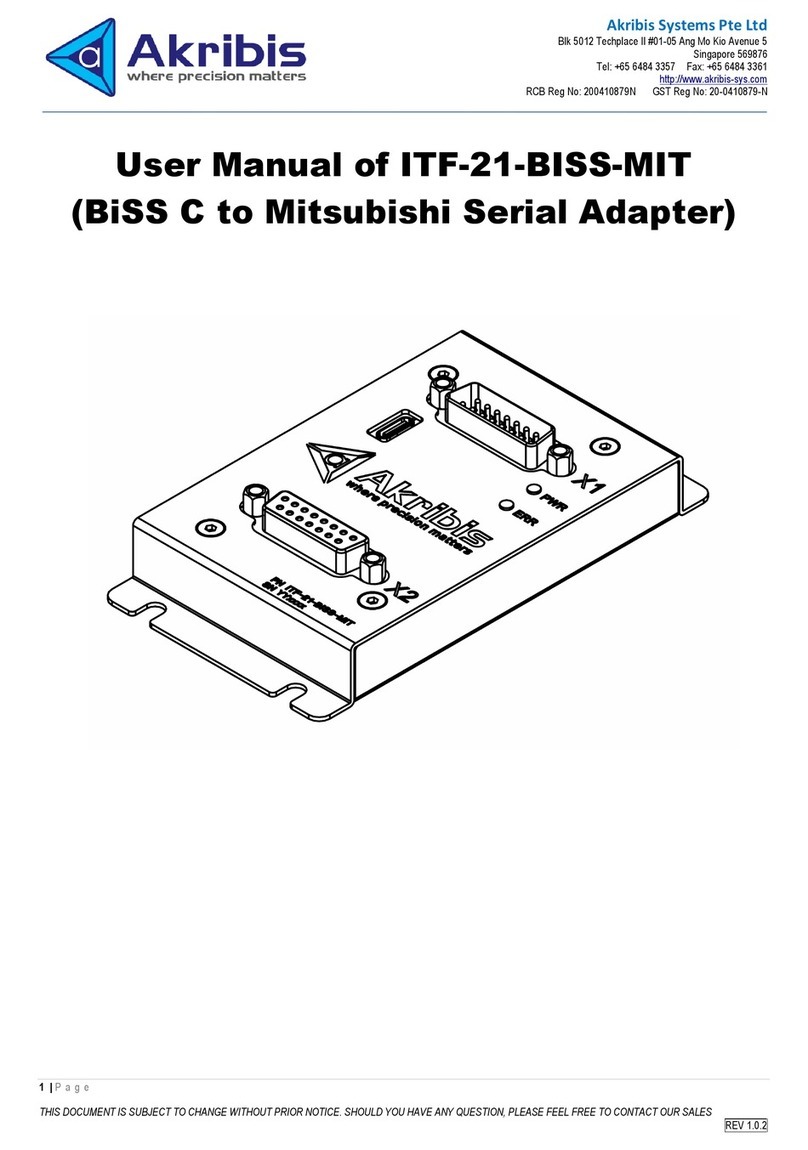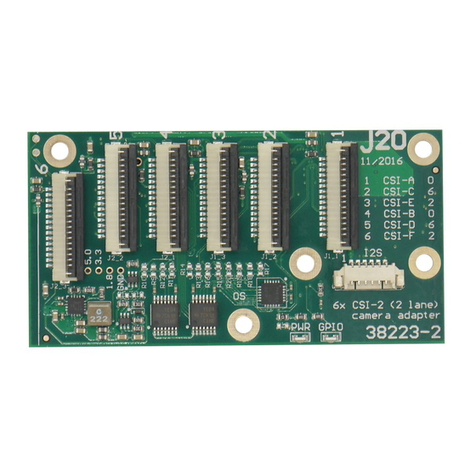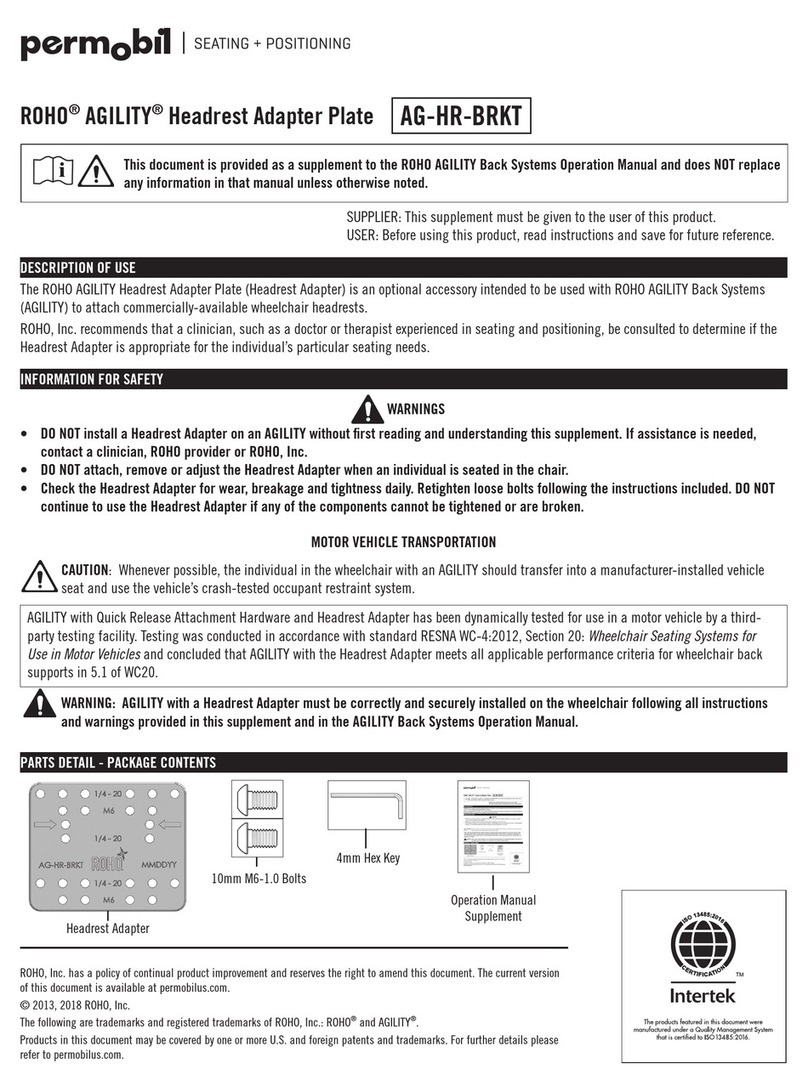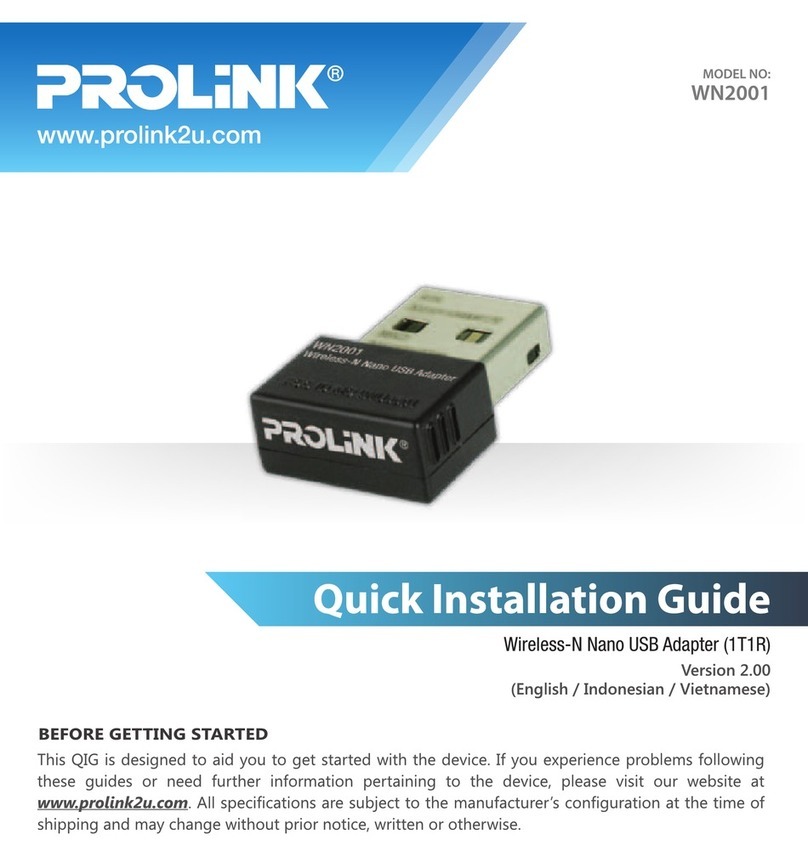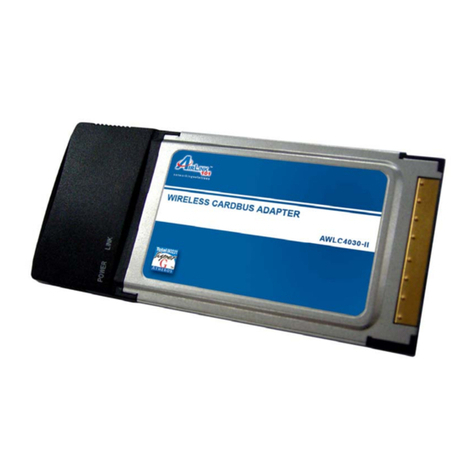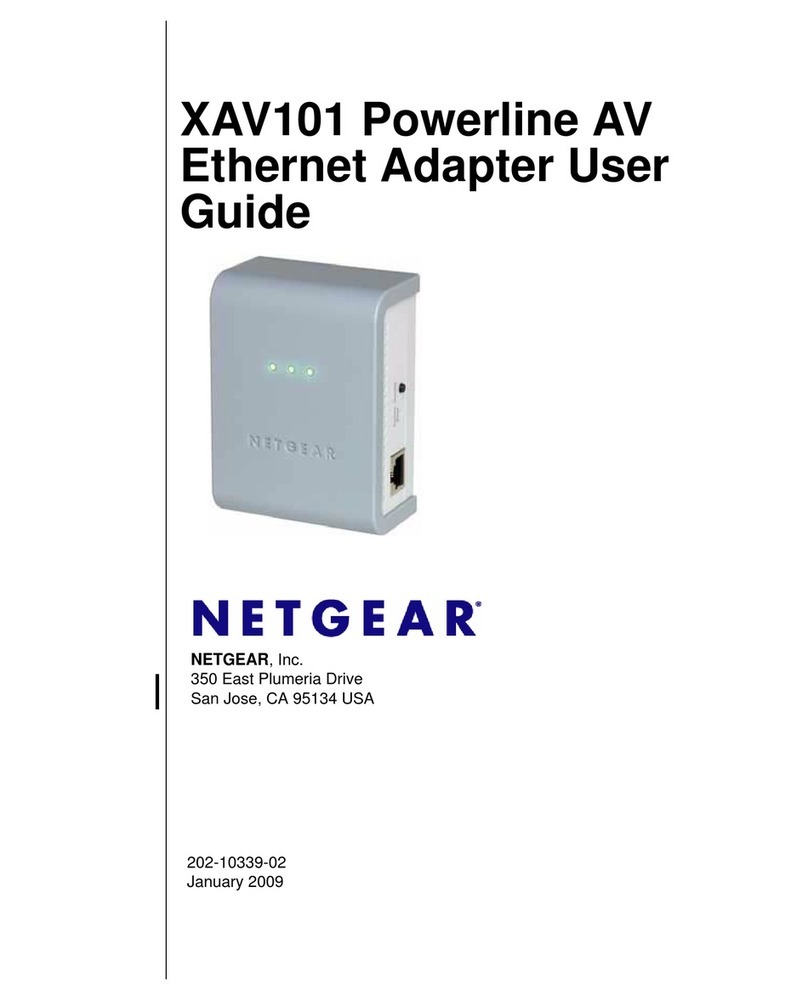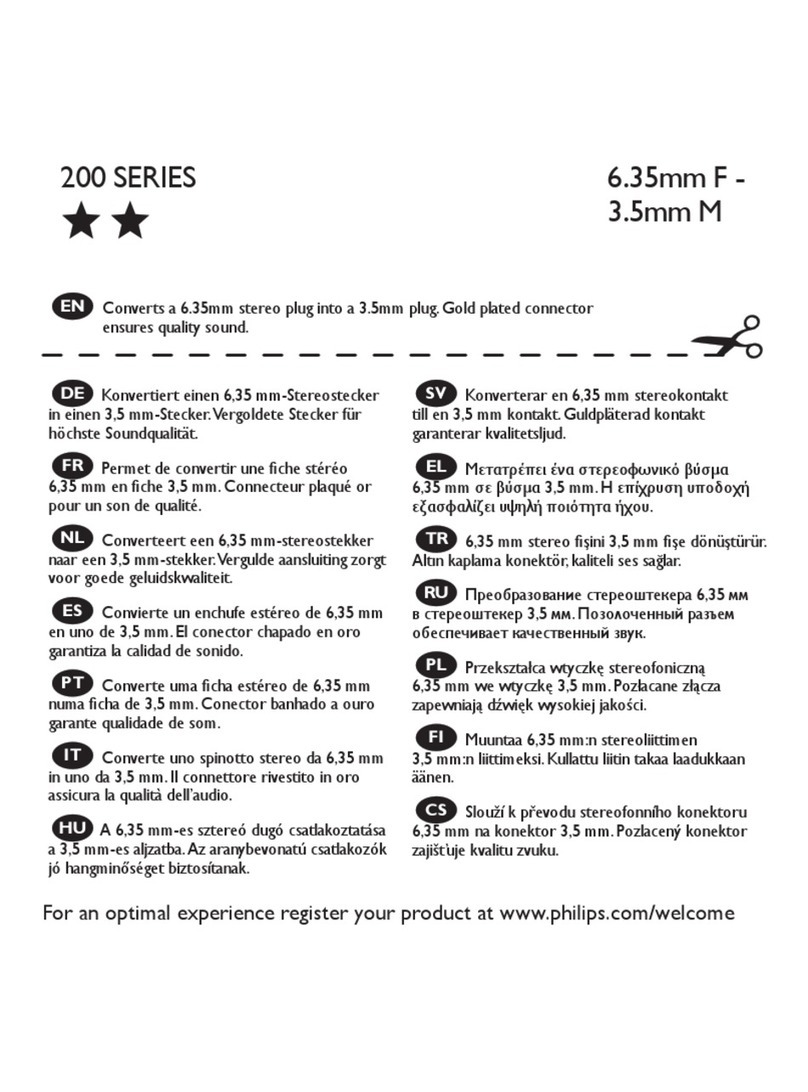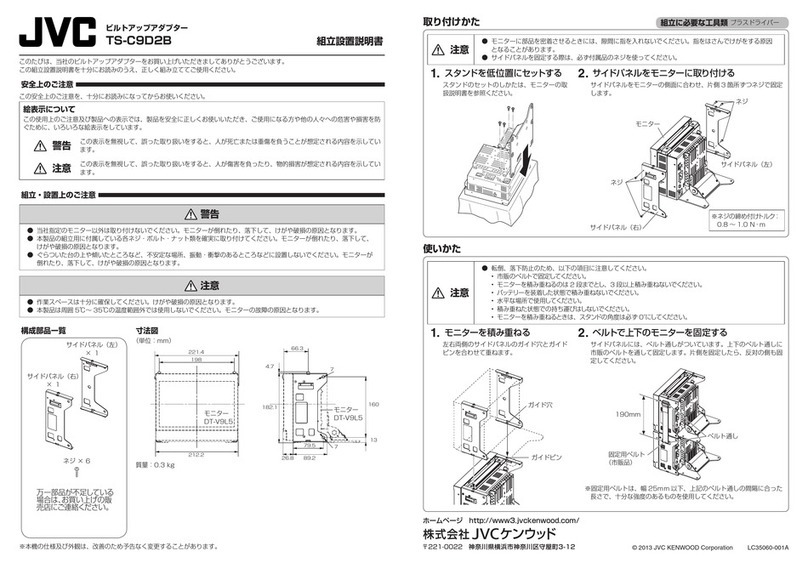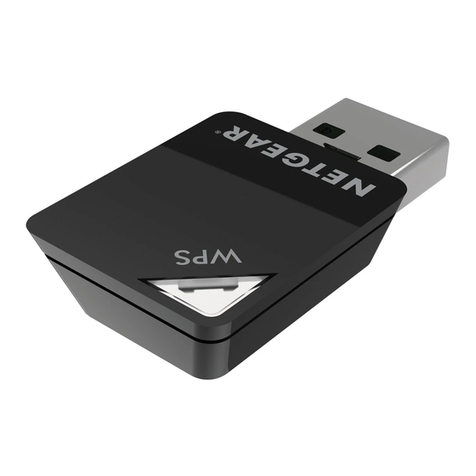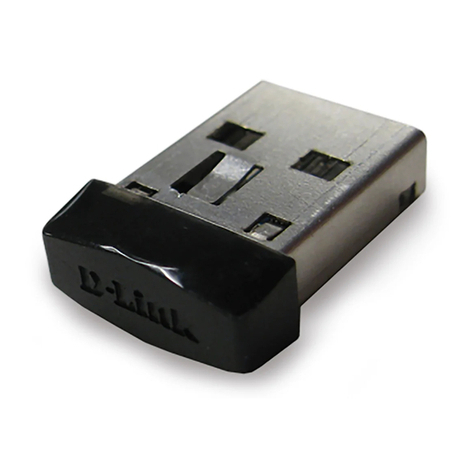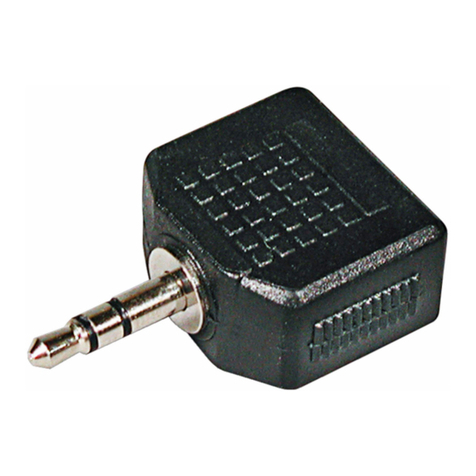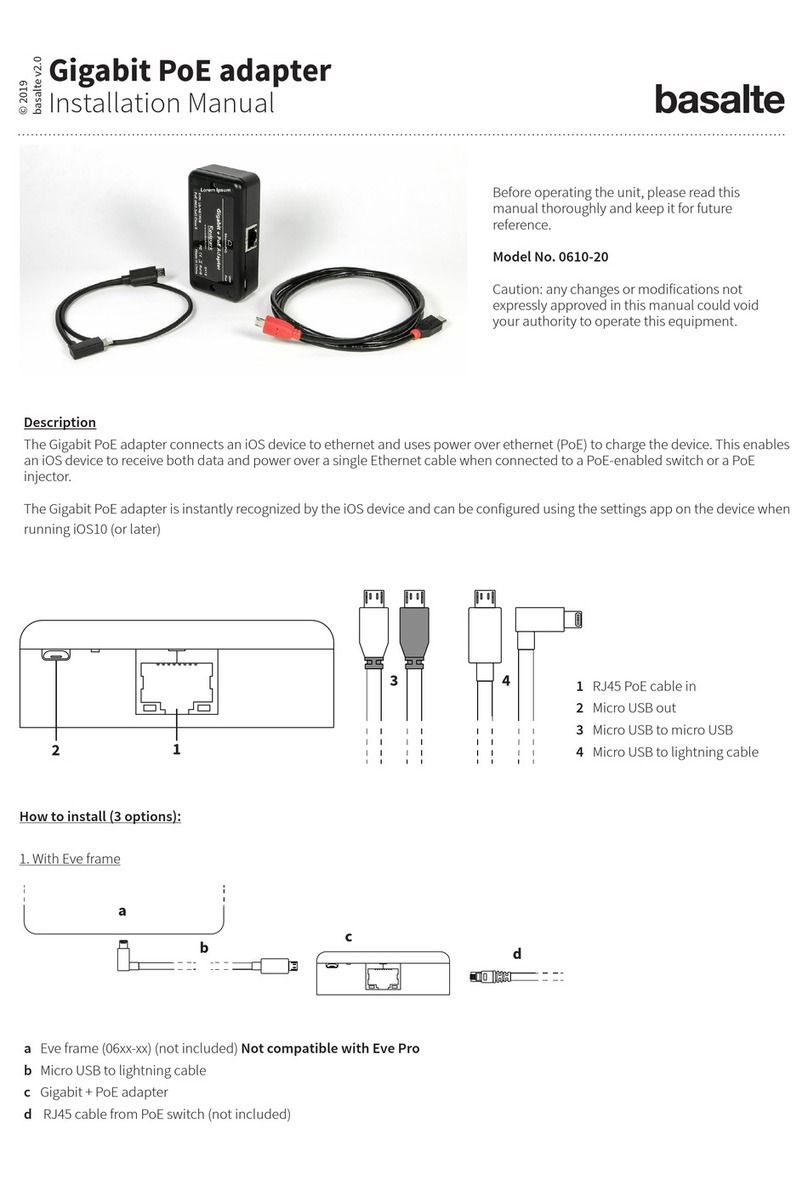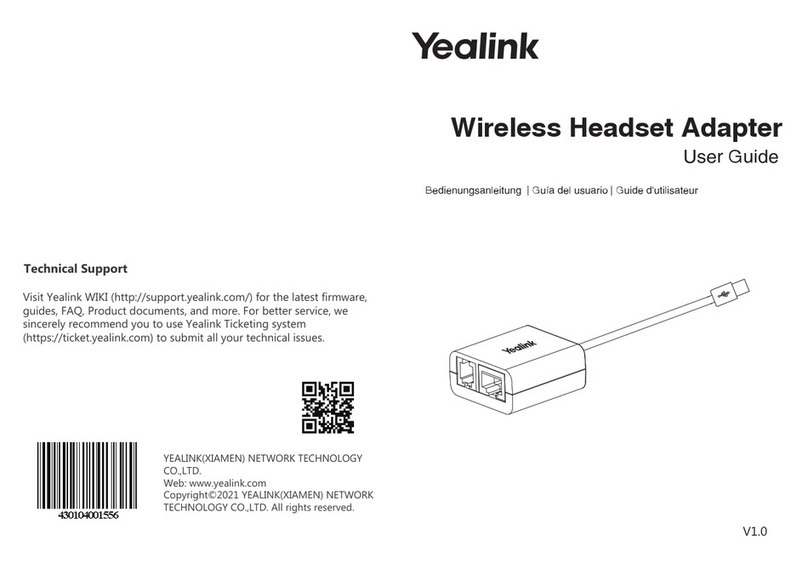
1.1 Properties at a Glance
■CAN interface for High-speed USB2.0 (compatible to USB1.1 and USB3.0)
■High-speed CAN connection (ISO11898-2)
■Complies with CAN specifications ISO 11898-1 for CAN and CAN FD
■CANFD support for ISO and Non ISO standard switchable
■CANFD bit rates for the data field (64bytes max.) from 25kbit/s up to 12Mbit/s
■CAN bit rates from 25kbit/s up to 1Mbit/s
■CAN bus connection via D-Sub, 9-pin (in accordance with CiA®106)
■Time stamp resolution 1µs
■FPGA implementation of the CANFD controller
■NXP CAN transceiver TJA1044GT
■Galvanic isolation on the CAN connection up to 500 V
■CAN termination can be activated through a solder jumper
■Measurement of bus load including error frames and overload frames
on the physical bus
■Induced error generation for incoming and outgoing CAN messages
■5-Volt supply to the CAN connection can be connected through a
solderjumper,e.g. for external bus converter
■Voltage supply via USB
■Extended operating temperature range from -40 to +85 °C (-40 to +185 °F)
1 Introduction PCAN-USBFD
User Manual 2.1.0 © 2023 PEAK-System Technik GmbH
6
